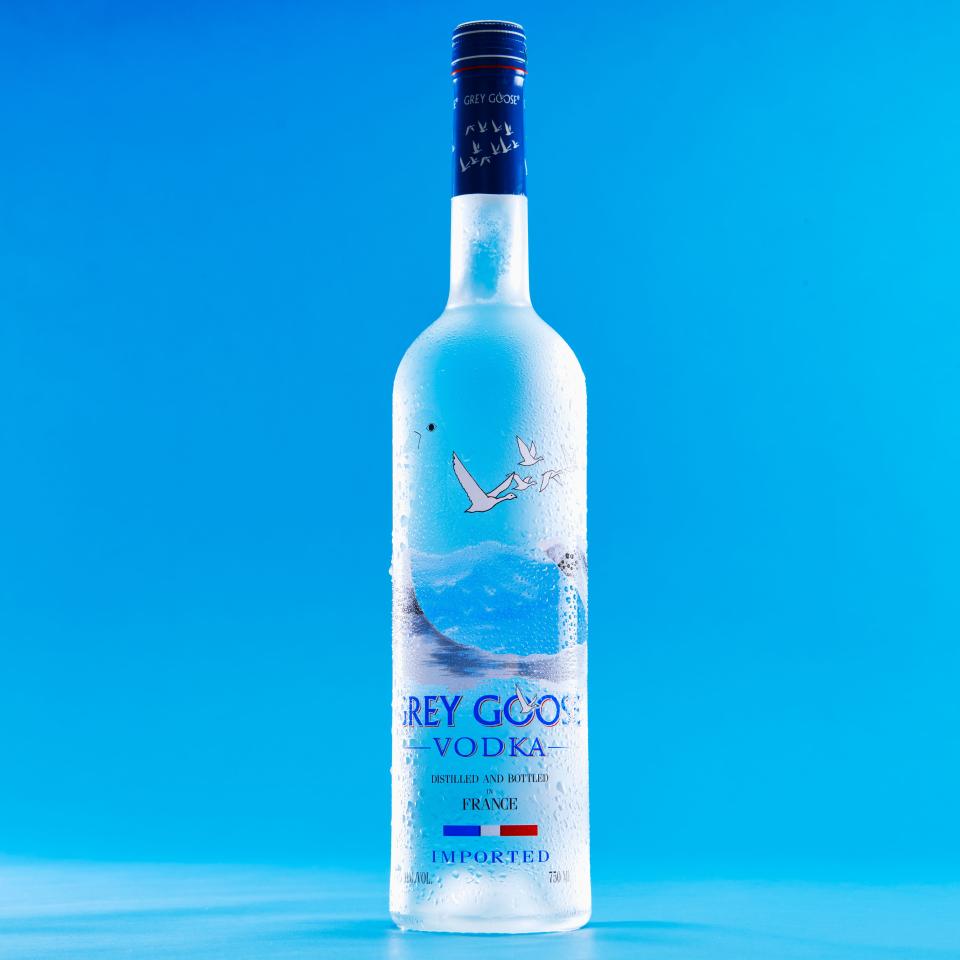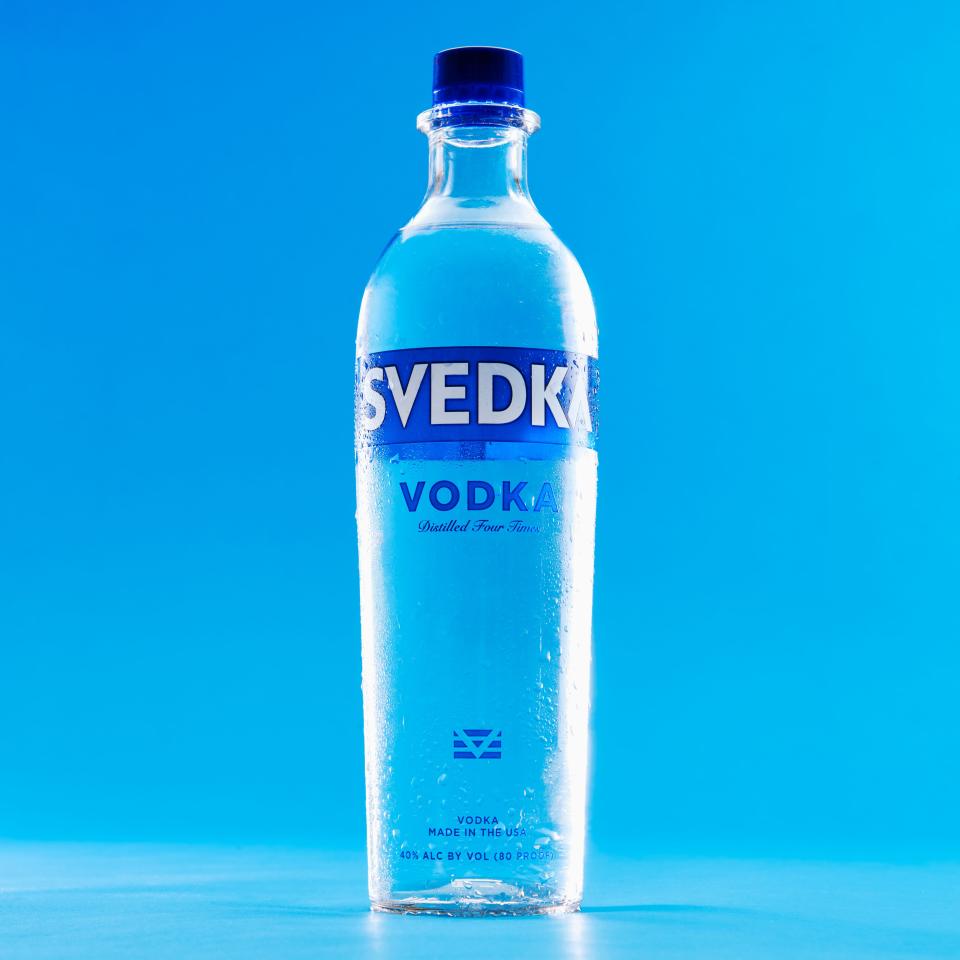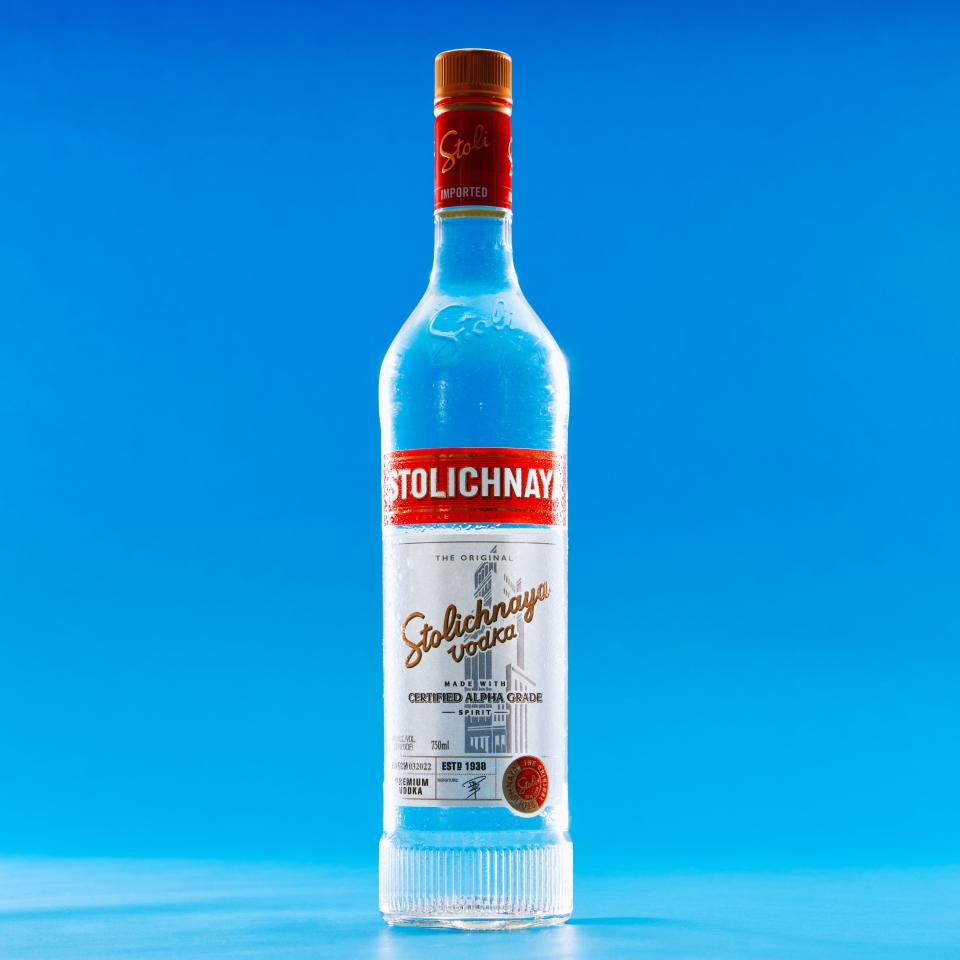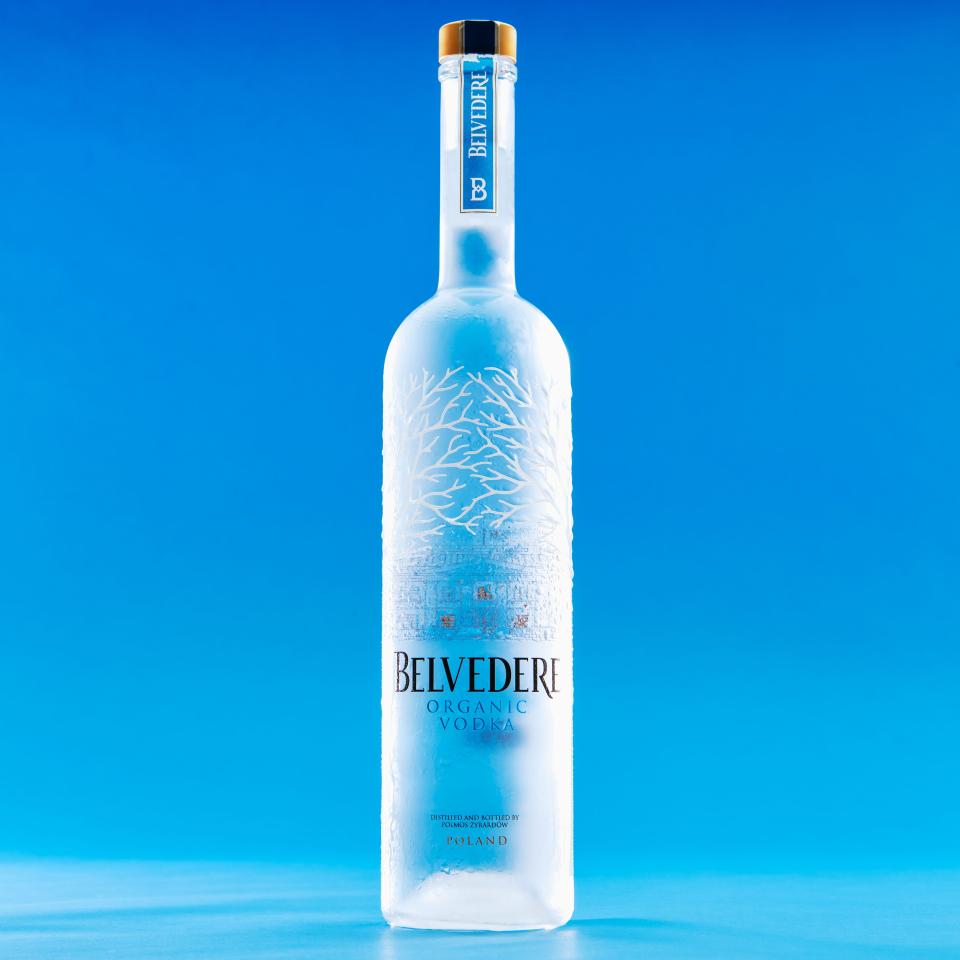Which Vodka Is Best? A Taste Test of Svedka, Stoli, Grey Goose, and More

Photograph by Travis Rainey, Food Styling by Emilie Fosnocht
In our Taste Test series, BA editors conduct blind comparisons to discover the best supermarket staples (like vanilla ice cream or frozen pizza). Today, which vodka should you grab off the shelf?
A good vodka is hard to find. Sure, in something like Penne alla Vodka (or even in Dirty Martini Chicken) any old vodka will do, since you likely won’t taste its flavor, even as it enhances the aroma and flavors of your sauce. But in the vodka cocktails you know and love—your Moscow mules, your cosmos, your Poo Drivers—finding the right spirit is the difference between after-work nirvana and grimace-inducing jet fuel.
As cocktail writer and The Encyclopedia of Cocktails author Robert Simonson explains, vodka is no longer made exclusively with potatoes, as it was decades ago. “Vodka can be made from anything,” he says. “As it became more popular, it was just made with whatever was available.” That means everything from wheat to beets to rye to rice can be turned into vodka these days. Those core ingredients are combined with water and fermented with yeasts for one to two weeks. Then, after the fermentation process, vodka is distilled.
That last step is important. Many vodkas advertise that they’ve been distilled several times. The reason why, Simonson explains, is because additional distillation results in a smoother, more neutral flavor, which is what appeals to the average consumer. Fewer distillations mean the vodka retains more of the character from the material used to make it—the grains, beets, what have you—though it’s admittedly more intense to drink and trickier to mix into cocktails.
The best vodka should be a chameleon: subtle enough to turn into drinks (hello, Bloody Mary) but self-sufficient enough to pour over ice and call it a day. That is what we set out to find in this month’s taste test.
How we set up our blind taste test
Vodka should start out colder than hell frozen over, no matter how you’re enjoying it. We froze our 11 bottles until they were frosty. Vodka is happy to live in your freezer indefinitely; its freezing point (about minus 16°F) is below the temperatures of most freezers (usually around 0°F). We tasted a sip of each chilled vodka straight up, followed by a sip of a martini made with the same vodka for a total of 22 (!) tastes. Admittedly, that’s a lot of vodka to drink in the middle of the work day, but we all made it out alive, mostly.
For our martini recipe, we turned to cocktail connoisseur and all-around mensch Stanley Tucci. Stanley, who I’d like to think I'm on a first-name basis with, prefers an extra-dry martini; that is, with vermouth stirred into ice in a beaker, then discarded (also known as a wash). But to distinguish our martini further from the straight vodka tasting, we kept the vermouth. Forgive us, Stanley! It was for science!
Extra-Dry Martini
How we picked the products
There are hundreds of brands of vodka out there—from craft-made to ultrarare special editions to candy-flavored varieties. We stayed away from those and instead looked at the most popular vodka brands across the US based on sales data. We also put a call out to the Bon Appétit staff, asking their preferred vodkas. After distilling (pun!) all this information, we narrowed down to 11 picks. This taste test covers the vodkas you’ll find in most liquor stores and bars, so you can choose the best bottle in any environment—from your local dive to a glitzy cocktail spot to your own bar cart at home.
How our editors evaluated
In some taste tests, like mac and cheese or boxed brownies, the difference between contenders is obvious before we even take a bite. This was not the case with vodka. Each glass was filled with the same clear liquid, so we had to zero in on flavor here. When we asked our taste testers what they wanted in a vodka, they threw out words like “smooth,” “neutral,” and “something that doesn’t taste like battery acid.” To us, the ideal vodka falls somewhere between silky and tasteless and intense and flavorful. We wanted to be able to detect a few delicate flavors—herbal, floral, malty, or anything else, for that matter—with a peppery, boozy finish.
Viscosity was an important factor too. Vodka should have body, lightly coating the tongue, like a jean jacket, not one of those heavy winter parkas. For each sip, we judged the vodka based on mouthfeel as well as legs (the residual drips of liquid down the sides of your glass after a swirl), which are a good indication of viscosity and sugar content.
Lastly, vodka must play nicely with the vermouth and citrus in a martini. Since a martini is about as vodka-forward as a cocktail can get (yes, we love gin too—a conversation for another day), we decided it would be the perfect proving ground for our taste test. Vodka that’s too harsh or sweet leaves the cocktail unbalanced, while the “just right” balance sits in the perfect center of floral, savory, and bright.
All in all, it’s a tall order for any single spirit, but after several sips and a lot of debate, we found four favorites.

The Smooth Talker: Grey Goose
Grey Goose has a reputation as a high-end vodka, though it’s still a staple at almost every bar. Made in France using soft winter wheat and spring water (which is apparently naturally filtered through limestone), this vodka is distilled just once to retain maximum flavor. Grey Goose also goes out of its way to mention that, while other large vodka companies might add glycerol or other sweeteners or additives that affect flavor and texture, it does not add anything beyond the wheat and water.
Why it won us over: From their first sips, our tasters were impressed with just how soft and velvety Grey Goose was. On tasting the vodka plain, senior cooking editor Emma Laperruque compared its taste to strong, melon-y sake, and senior test kitchen editor Jesse Szewczyk said his sip was “incredibly smooth.” Although everyone agreed the vodka on its own smelled a bit like acetone, recipe production assistant Carly Westerfield was pleased at the way Grey Goose’s round flavor and clean finish fared in the martini. “This is so much better than I thought it would be,” she said happily.
We’d love it in: Cocktails galore! Since Grey Goose is among the pricier of the vodkas we tasted, drink it in something where you can appreciate the quality. May we suggest a Vesper?

Svedka Bon Appetit
Photograph by Travis RaineyThe Blank Canvas: Svedka
Whereas Grey Goose is considered top-shelf, Svedka has a more approachable cost. Prices vary by vendor, but a 750-milliliter bottle of Svedka generally goes for less than $20, whereas a slightly larger 1-liter bottle of Grey Goose costs about double that. The brand is originally Swedish, but in fact, it’s not easily found in Sweden and many Swedes haven’t heard of it. Until recently, its bottle read “imported from Sweden,” but as of a few years ago, it reads “made in the USA.” Undoubtedly a mystery to unfold here, but we’ll let you go down that rabbit hole another time. Suffice to say: It’s a vodka made with American corn that’s distilled four times.
Why it won us over: As far as vodkas go, Svedka is about as easygoing as it gets. After a couple deep sniffs, Emma detected an aroma that was creamy—“like butter!” she said—which was a welcome reprieve from some other samples that had a much harsher nail polish remover smell. Our tasters found Svedka to be pleasantly mild and relaxed. Deputy food editor Hana Asbrink liked how smooth and neutral Svedka was. “It barely burns going down,” she said.
We’d love it in: If you’re on the hunt for an easy introductory vodka—or making a batch cocktail to serve at a party—Svedka is a good choice. Try it in a Lemon Drop or a Kombucha-Vodka Cocktail. With its low price point, it’s also a worthy candidate for vodka sauce or this vodka-boosted no-churn ice cream.

The Personality Hire: Stoli
Stoli’s formula was cemented in 1938 and was originally produced under Soviet state control. Now, it’s owned by billionaire Yuri Shefler and bottled in Latvia—it even went under a recent rebrand in order to distance itself from Russia after the invasion in Ukraine. The spirit is made with “natural grain,” according to its website, and distilled three times.
Why it won us over: It’s true that gin, vodka’s spunkier cousin, will always pack in more flavor because of its added botanicals like juniper. But vodka—at least a great one—doesn’t have to be flavorless. A sip of Stoli proves as much. Emma described it as “floral,” while Hana called it “botanical.” A sniff revealed the scent of just-cut grass, or a “spring breeze,” as Emma put it. There was a tickle of lavender in each sip, accompanied by a hazy herbal note. Jesse liked that it had significant body yet a clean finish.
We’d love it in: Stoli would be great in something bright and summery, like a Greyhound or a Green Goddess Cocktail. It would also fare well in cocktails that call for vodka or gin, like the Salty Dog or a Pickle Martini.

Vodka Taste Test
Photograph by Travis RaineyThe Big Winner: Belvedere
Belvedere is a Polish vodka made exclusively with Polish-grown organic rye. Unlike other countries, such as the US, Poland has strict laws around vodka production, which means Polish vodka can only contain Polish grain or potato and water, and the spirit has to be produced from start to finish on Polish territory.
Why it won us over: Belvedere was the Goldilocks of our vodka taste test. Editors appreciated its mild aroma—no rubbing alcohol scent to speak of—and were tripping over themselves with compliments after their initial sips. “Peppery and smooth,” Emma exclaimed, as Jesse praised its subtle “green peppercorn” flavor. Carly gave it high marks for its round, generous texture and its soft, no-burn finish. It was that contrast—the piquant spice with no sharp sting—which led our testers to declare Belvedere their favorite.
We’d love it in: a glass with ice and twist—don’t overthink it. Belvedere is a vodka you can enjoy on its own. It would also shine in any and every vodka cocktail.
We also tried…
In alphabetical order, these are other vodkas we downed for our taste test.
Absolut: A somewhat artificial-tasting floral note rubbed our tasters the wrong way. Emma was quick to label it “too strong,” and other tasters had similar reactions.
Kirkland Signature French: Sommelier André Huston Mack described a “burnt sugar” taste in Kirkland’s vodka, but our tasters were preoccupied with its aggressive scent and watery texture.
Ketel One: An outsize pepperiness was the only flavor our tasters could detect followed by a long and somewhat harsh finish.
New Amsterdam: Our tasters noted a nose-scrunching acetone aroma and a chemical je ne sais quois.
Pinnacle: The pepperiness was aggressive here—it made our lips tingle and competed with the vermouth in the martini.
Smirnoff: Without much in the way of flavor (it’s distilled three times and filtered 10), our tasters mostly detected the acrid aftertaste.
Tito’s: There was a pleasingly herbal aroma and an array of flavors here, but its bitter aftertaste took Tito’s out of the running.
Originally Appeared on Bon Appétit
More Cooking Stories From Bon Appétit
Get Bon Appétit in your inbox with our daily newsletter.
The Bon Appétit 56—our recipe shortlist for 2024—is here. Which dish will you make first?
Check out what our editors are cooking and baking at home.
We found the best chocolate chips in our latest taste test.
Hard ciders have gotten seriously good—these are our favorites.
What to do with leftover broccoli stems? Make these two-ingredient pickles.
Chris Morocco solves your kitchen emergencies on our podcast Dinner SOS.
Cook all the Bon Appétit recipes you love with our Epicurious app.



